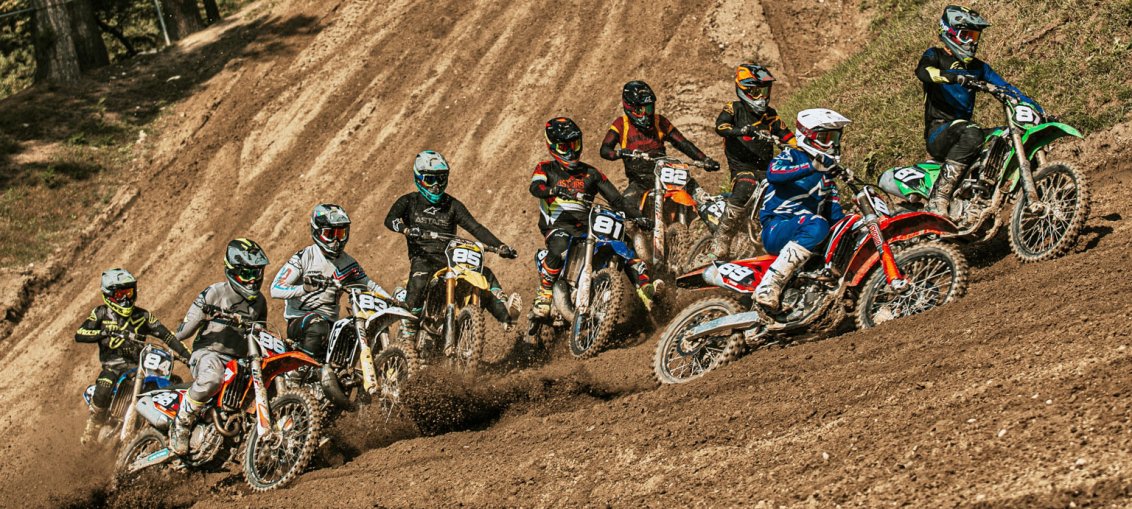
MX2 – now you have a choice as two-stroke or four-stroke is now a real buying decision. With 250 two-strokes now being allowed in the vast majority of MX2 classes, we put the three quarter-litre smokers up against the MX2 four-bangers to see which is best. However, once again there is an omission as TM again declined to be involved as the Italian factory has done every year. Their reason is that their company policy is not to be involved in comparison tests.
MotoHead got together with Italian magazine X-Offroad to put all the new 2020 model bikes up against each other to see which is best. This year there were 18 bikes in total from Honda, Husqvarna, Kawasaki, KTM, Suzuki and Yamaha, across the MX1, MX2 and 125 classes.
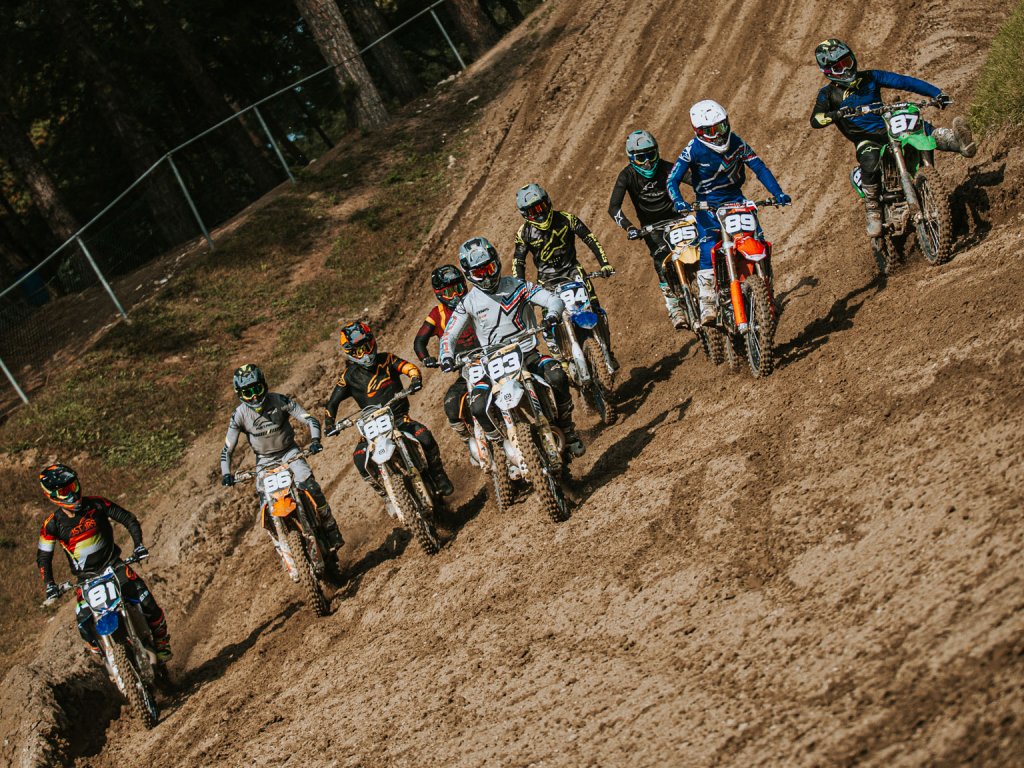
As every year, the bikes are weighed, put on the dyno for power and torque and their noise output measured. However, this year MotoHead’s chief tester Dave Willet was out of action with a broken arm. So we did things a little differently.
The MX2 bikes had magazine tester Stefano Dano and MX2 racer and former EMX250 champ Morgan Lesiardo.
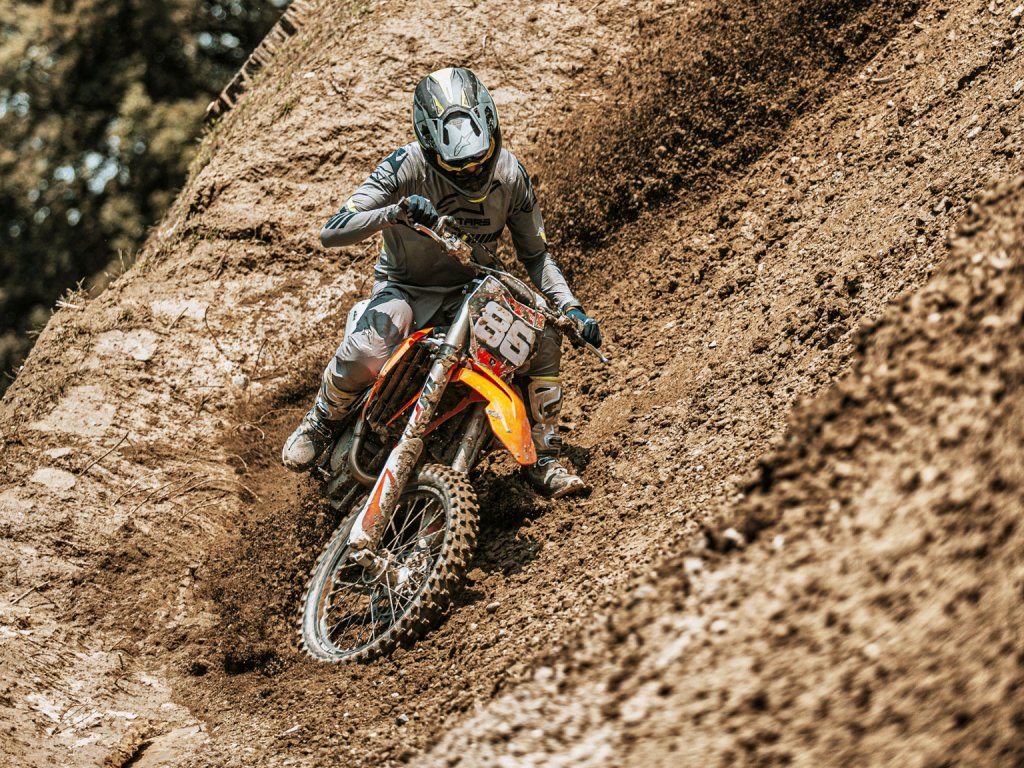
Each of the bikes were given a score out of 10 for 16 different categories including stability, ergonomics, starting, brakes, handling and lots more. From these scores, a chart was produced to give a good impression of the bike’s total performance.
With a score of 160 possible, we worked out the % score of each bike. This gives an overall rating, but of course there is much more to each bike than scores. Some bikes suit different riders more than others, so what is ‘best’ for one might not be for others. So we prefer to show the figures so you can see which area each bike excelled and match it to your needs.
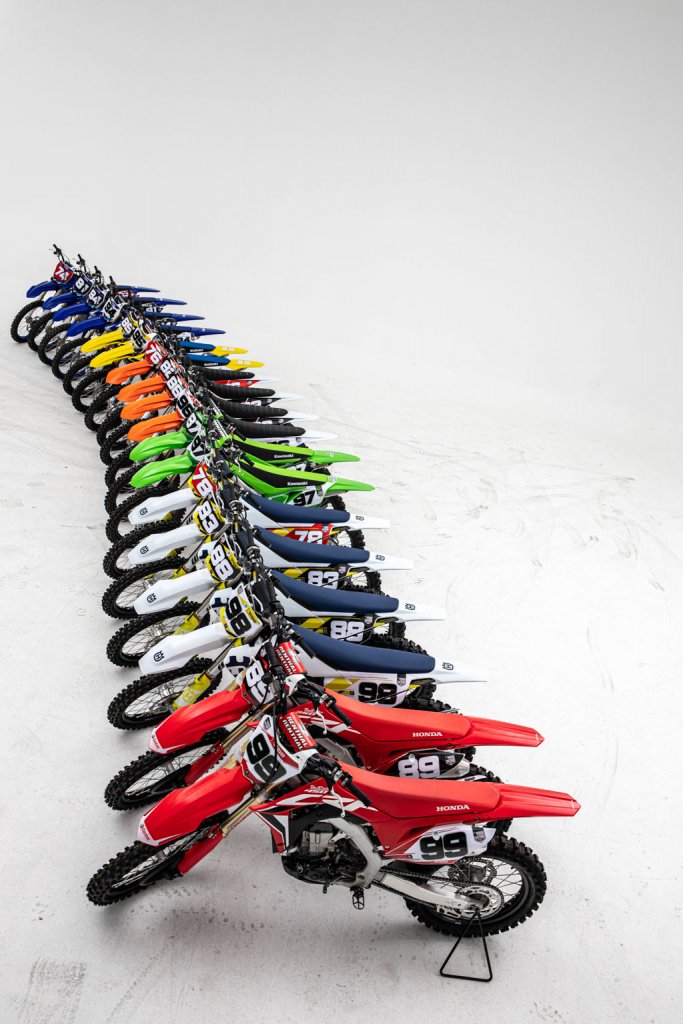
Which MX2 machine is right, right now?
For many years the MX2 class has been the sole domain of 250 four-strokes as the 125 smokers were just too old-school and hard to ride for many racers. But now 250 two-strokes are allowed in, and they are lighter, more powerful, easier to maintain and many say just more fun to ride.
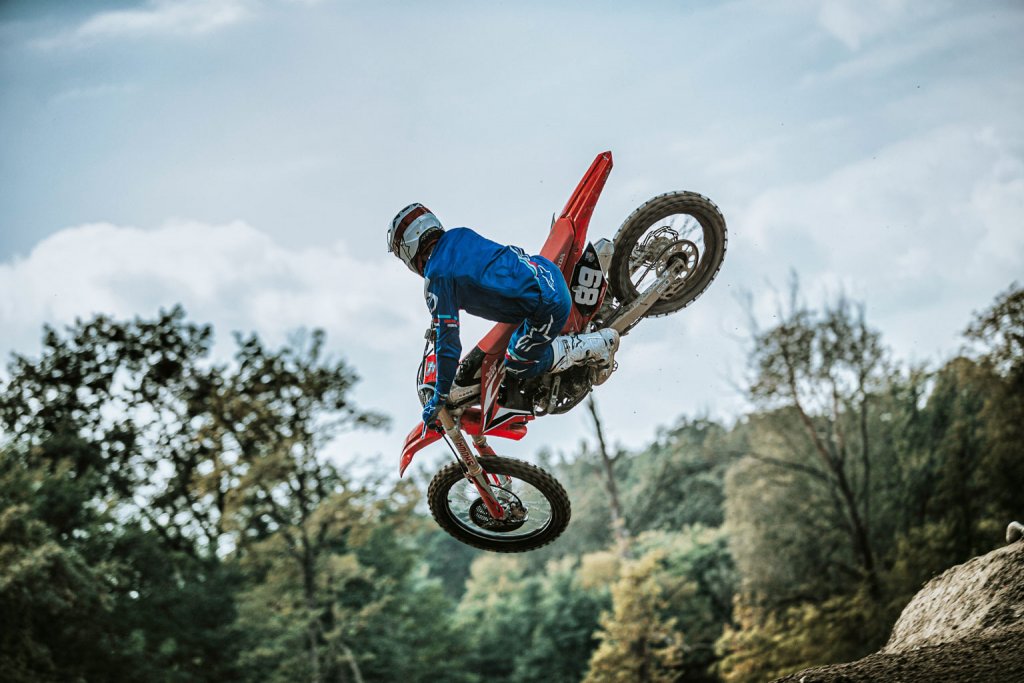
Add in to the MX2 mix an all-new Kawasaki KX250 – featuring the massive changes the KX450 got last year – and it’s an exciting time. That’s in complete contrast to the Yamaha YZ250 which has hardly changed for over a decade yet continues to show a balance and effectiveness that puts it ahead of so many modern thumpers.
It might be a little less powerful than the Austrian 250 two-strokes, but it has a lot of torque and a balance that borders on perfection. It is not bang up to date like KTM and Husky, but the YZ250 is still competitive against much more recent bikes.
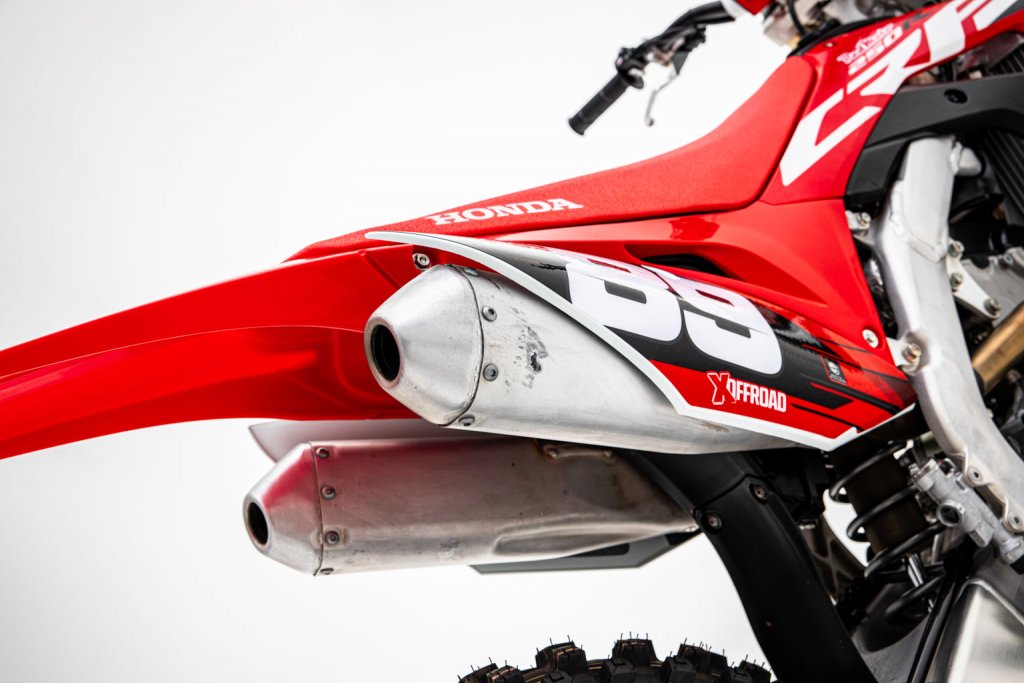
Both testers Morgan Lesiardo and Stefano Dani found the big smokers not only fun, but also effective, particularly in the heavier going of our second day of testing at Cadrezzate.
Of course the theory says at a given displacement, a 2T engine can make twice the power of a four-stroke – hence why the MX2 class was 125 smokers against 250 four-bangers. But in practice, it’s very different. The Austrian 250 two-strokes do put out the most peak power, but only just. And the Yamaha YZ250 actually makes a bit less than the KTM and Husky 250Fs. But all the smokers have significantly torque, so they really do fire out of the corners like no 250F can.

In terms of the four-stroke 250s, the Austrian engines maintain an advantage at the top. The only one to approach is Yamaha’s YZ250F. The Honda stretches out well but lacks a bit of bottom end, the new Kawasaki has decent mid but needs to be revved the Suzuki simply does not have as much power. Compared to the motors made in Mattighofen, no Japanee four-stroke comes close in stock form.
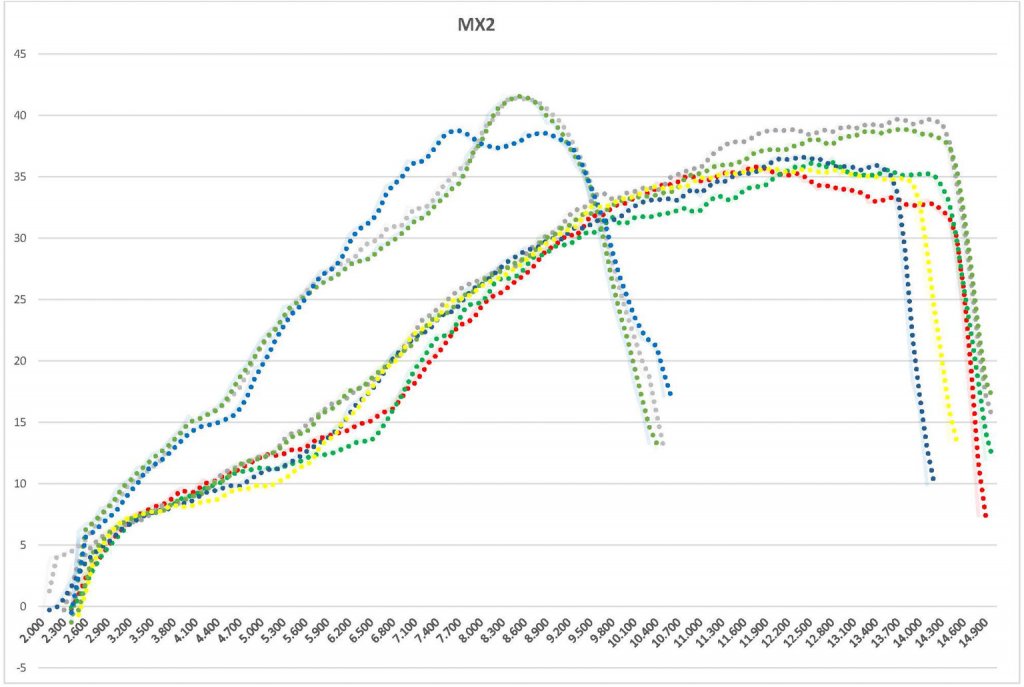
Power
- Husqvarna TC 250 42.70 bhp at 8.300 rpm
- KTM 250 SX 42.60 bhp at 8,500 rpm
- Husqvarna FC 250 40.70 bhp at 13.600 rpm
- KTM 250 SX-F 39.90 bhp at 13.600 rpm
- Yamaha YZ250 39.80 bhp at 7,600 rpm
- Yamaha YZ250F 37.70 bhp at 12.300 rpm
- Kawasaki KX250 37.60 bhp at 12.500 rpm
- Honda CRF250R 36.90 bhp at 11,600 rpm
- Suzuki RM-Z 250 36.80 bhp at 11.900 rpm
Torque
- Yamaha YZ250 38.28 Nm at 7,000 rpm
- Husqvarna TC 250 37.11 Nm at 8.300 rpm
- KTM 250 SX 36.72 Nm at 8,100 rpm
- Husqvarna FC 250 26.71 Nm at 9,600 rpm
- Suzuki RM-Z 250 26.22 Nm at 9,400 rpm
- KTM 250 SX-F 26.12 Nm at 9,300 rpm
- Yamaha YZ250F 25.73 Nm at 8,500 rpm
- Honda CRF250R 25.63 Nm at 9,500 rpm
- Kawasaki KX250 25.14 Nm at 8,700 rpm
Verdict
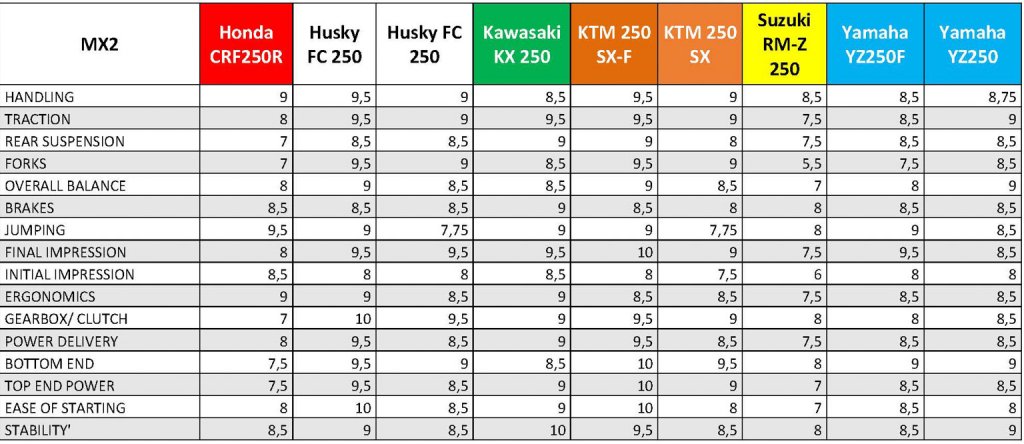
Total scores:
- KTM 250 SX-F 149
- Husqvarna FC 250 147.5
- Kawasaki KX250 143.5
- Husqvarna TC 250 138.75
- Yamaha YZ250 137.25
- KTM 250 SX 136.75
- Yamaha YZ250F 135.5
- Honda CRF250R 129
- Suzuki RM-Z 250 126
Just as in the 450 class, it seems that KTM does live up to its Ready to Race moniker with a bike that performs incredibly well with no weaknesses at all. It’s light, fast, agile and is narrowly ahead of its Austrian sibling, the Husqvarna FC250. That’s no surprise as they share most of the major components but differ in spec choice and set up. And the new Kawasaki isn’t far behind.

But in terms of scores, it might be surprising to see the three two-strokes right on the heels of the top three four-bangers. On paper, then they aren’t far behind. But of course it’s a much different experience riding a two-stroke. They might have a similar power output but have lots more instant torque which equals thrust out of corners. Whether that translates into faster lap times depends on the track and the rider skill, especially towards the end of a race where all that rip might take its toll on you. At least now the 250 smokers have a real second wind as competitive bikes again.

